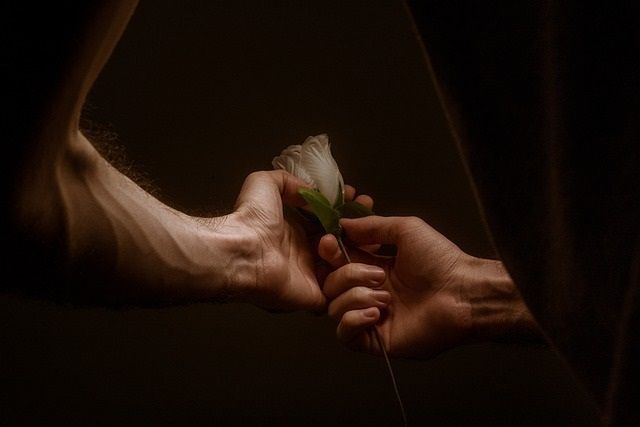Sex in the confessional: 75 ways to ask for carnal favors
Is it possible that the necessary requirement to receive communion was used precisely to add one more sin to those who came to unburden themselves?

In the Catholic Christian rite, confession forgives sins and purifies the penitent, or is it possible that the requirement to receive communion was used precisely to add one more sin to those who came to unburden themselves of them?
When one enters a temple and looks at the confessionals, one is looking at a small cell conceived to separate the clergyman from the confessor and avoid all kinds of sins, especially sexual sins. And also to banish from the Catholic Church the crime of solicitation.
On March 24, 1713, the Inquisition of Mexico issued an edict to all priests, prelates, and confessors, not only for Mexico City but for the whole kingdom of New Spain and bishoprics such as those of the Philippines, Honduras, Nicaragua, Nueva Vizcaya or Guatemala, in which the order was strict: the act of confession would be regulated by very strict norms.
Among these was the prohibition to confess in cloistered cells, closed chapels, or sacristies, but only in the body of the church; neither were priests allowed to confess in private homes or their own homes, and also it was no longer possible to confess facing the confessor kneeling, this act had to be done from the side, and in the case of women, placing a grill or a wooden gate between the priest and her. It was also unlawful for confessors and penitents to have conversations before or after performing this sacrament.
All this was intended to avoid the many cases of sexual relations between clergymen and believers, of which there is evidence in the Mexican archives of the Holy Office. The broad ideological repression of the time found its illicit opposite in one of the most important Catholic rituals.
Many cases are recorded in the archives of the Inquisition in which the confessor asked a girl to confess her in his room or in which there was a mutual agreement between confessor and penitent, in which the former asked her to pretend to be sick to go home, and then close the door of the room to be alone. There was also a severe prohibition that the confession be made facing the clergyman and kneeling, a man or a woman arrived, it was all the same, put the cassock over him and he could do what he wanted.
These data, which could be heard in the conference Love and disaffection in religious orders, are based on historical research, among which are: The crime of solicitation in the bishopric of Puebla during the eighteenth century, The crime of solicitation in the archbishopric of Mexico during the eighteenth century, The apostolic missionaries of the colleges of Propaganda Fide and The Jesuits after their expulsion in 1767, the case of Tepotzotlán.
The crime of solicitation consisted in the confessor's request to the penitent, precisely during confession, to have sexual relations. That is to say, it was a crime exclusive to the clergy, a woman or a secular man could only seduce the religious, but not incur in this offense.
As an example, the anthropologist Jorge Rene Gonzalez Marmolejo cited the trial of Joseph Gallegos, a Dominican who solicited a girl and got her a house very close to the convent of the Conceptionist order so that she could live there. By the way, Gallegos had a cell in an accessory of the cloister where he could sleep inside if he wished and kept two nuns at his service. This personage even requested more confessionals in that place as well as in Santa Maria and San Jeronimo.
Another clergyman, towards the end of the 18th century, José Ignacio Troncoso, had relations, in Tulancingo -then a town of between two and three thousand inhabitants-, with about 35 women for five years, one of them his cousin, with whom he had a son. The punishment inflicted meant being locked up, albeit in his order, and being marginalized. Then he went back to his old ways, was arrested, and charged again.
The punishment may seem simple to us, but it was severe. It meant occupying the last place among the members of his religious community and being singled out, that is, they were not allowed to confess or hold office in their congregation, they were permanently under surveillance and their behavior was reported to the Holy Office. It was not a corporal punishment but a spiritual one.
And it was precisely this type of punishment that was inflicted on Hidalgo and Morelos in the famous trial followed by the Inquisition, as it lowered them to the secular order since, in reality, it was the viceregal state that executed them. They made people dust and mentally undid them, but in addition, hell was tangible, real, therefore, terrible.
In the archives of the Inquisition, concerning the crime of solicitation, there are 75 ways of calling the sexual act. Most of them provoke curiosity and reflect the cultural and verbal form that the repression of the body could take.
Among them, the researcher, who coordinates the Seminar of History of Mentalities, has found these: carnal access, complete act, sodomy, via natural, via rear, impure fondness, illicit trade, carnal condescension, carnal copulation, dishonorable slips, fornicate, force and enjoy, illicit communication, impure desires, incontinence, clumsy sin, relations, frolic, solicit to sin, clumsiness and insolent dealings, use, and sin, and to arrive at the last act.
Source: INAH




